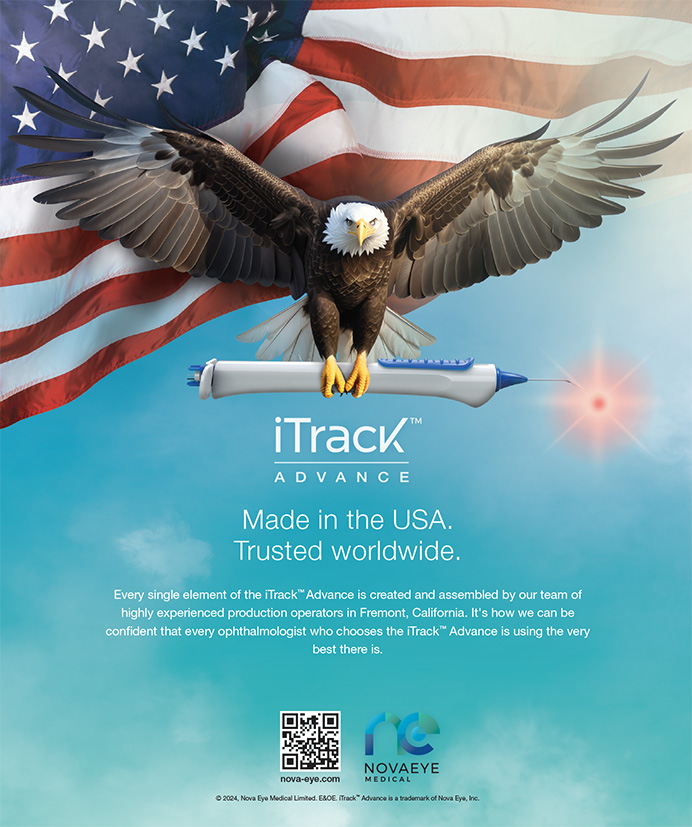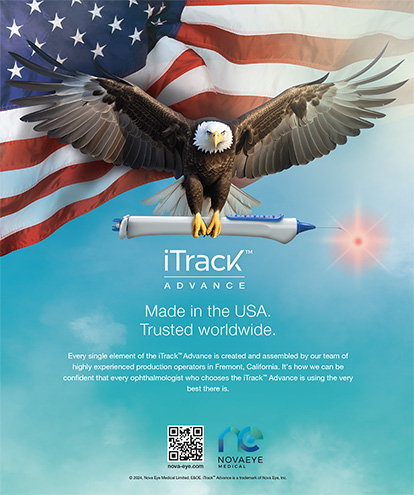
The ability to offer refractive correction and reduced spectacle dependence at all distances has changed the discussion of cataract surgery between patients and eye care providers. Having a number of IOLs at our disposal that can correct astigmatism and either extend depth of focus or provide multifocality allows surgeons to offer cataract extraction with minimal to no postoperative refractive error. Further, as we know, receiving these IOLs is life-changing for many patients. Optimizing the ocular surface before and after surgery, however, is essential to delivering the expected visual outcomes.
WHY ASSESS THE HEALTH OF THE OCULAR SURFACE?
The IOLs used during refractive cataract surgery are nearly always considered cosmetic or voluntary upgrades by third-party insurers, leaving patients to cover a significant portion of the surgical cost. Carefully assessing the eyelids, eyelashes, and ocular surface for signs of dry eye disease (DED) before surgery can help to identify patients in whom cataract surgery may exacerbate DED, which can lead to visual symptoms that decrease the perceived success of surgery. Accurate IOL power calculations are another key component of successful refractive cataract surgery; DED can negatively affect these calculations, often leading to a hyperopic shift after surgery.1
Studies suggest that DED is undiagnosed in nearly 70% of patients with the condition,2 and the incidence is higher among postmenopausal women.3,4 Because cataract formation progresses with age, physicians and staff must evaluate refractive cataract surgery candidates for age-related comorbidities. The proactive management of DED before and after cataract surgery can help to optimize visual outcomes.
DIAGNOSIS
The use of a DED survey such as the Standardized Patient Evaluation of Eye Dryness questionnaire, Ocular Surface Disease Index, and Dry Eye Questionnaire 5 can assist in determining which patients may require treatment before cataract surgery. Staining with vital dyes such as fluorescein and lissamine green can also help to identify patients who have ocular surface disease.
It is important to assess the lid margin for scurf due to blepharitis, vascularization due to inflammatory lid disease, and cylindrical dandruff associated with various Demodex species. Patients with any of these findings are at increased risk of complications related to DED after cataract surgery.
Expressing the meibomian glands can help to identify which patients may develop symptoms of evaporative DED due to meibomian gland dysfunction (MGD).
TREATMENT
The first step in managing patients with newly diagnosed DED is to initiate the frequent instillation of nonpreserved artificial tears and therapy with cyclosporine ophthalmic emulsion 0.05% (Restasis, Allergan), cyclosporine ophthalmic emulsion 0.09% (Cequa, Sun Pharma), or lifitegrast ophthalmic solution 5% (Xiidra, Novartis International). A recently reported study found treatment with immunomodulators led to a positive change in higher-order aberrations in repeat biometry measurements in cataract surgery candidates.5
When ocular surface inflammation is severe, a short course of ophthalmic topical corticosteroids can be prescribed. If vascularization of the eyelid margin is pronounced, a perioperative course of doxycycline may be beneficial. For patients with a reduced tear meniscus, temporary (90–180 days) punctal occlusion with dissolvable punctal plugs placed bilaterally in the lower puncta may improve DED signs and symptoms before and after cataract surgery.
Severe evaporative DED due to MGD may require in-office treatment to heat and express the obstructed meibomian glands. Options include devices such as the LipiFlow Thermal Pulsation System (Johnson & Johnson Vision), the TearCare system (Sight Sciences), and Systane iLux MGD Thermal Pulsation System (Alcon). Depending on the timeline for surgery, intense pulsed light treatment may be an option; it can provide a long-term improvement in lid inflammation and MGD, thereby helping to optimize meibomian gland function after refractive cataract surgery.
Several factors responsible for the development of DED after cataract surgery6-9 are outlined in the Five Common Causes of Dry Eye After Cataract Surgery. The advance identification of patients with these risk factors for DED allows proactive treatment of the ocular surface to be initiated.
Five Common Causes of Dry Eye After Cataract Surgery
- The use of preserved antibiotic and steroid eye drops
- Surface irregularity at the site of the incision that reduces tear film breakup time
- Decreased mucin production from the conjunctiva secondary to incision placement
- Reduced tear secretion due to decreased corneal sensation caused by a disruption of the cornea–lacrimal gland loop by a surgical incision
- Poor tear film production and decreased tear film stability because of surgically induced ocular inflammation and exposure to light from the operating microscope
CONCLUSION
To build a refractive cataract surgery practice that truly thrives in today’s health care landscape, it is essential to adopt tertiary dry eye care. Assessing the health of the ocular surface to diagnose and treat DED before surgery can help to elevate postoperative outcomes, result in more happy patients, and, one hopes, increase word-of-mouth referrals.
1. Lianhua H, Yingjun L. Pilot study on dry eye affecting the accuracy of intraocular lens power measurement in age-related cataract. Chin J Exp Ophthalmol. 2016;34(2):170-174.
2. Behrens A, Doyle JJ, Stern L, et al; Dysfunctional tear syndrome study group. Dysfunctional tear syndrome: a Delphi approach to treatment recommendations. Cornea. 2006;25(8):900-907.
3. Schaumberg DA, Sullivan DA, Buring JE, Dana MR. Prevalence of dry eye syndrome among US women. Am J Ophthalmol. 2003;136(2):318-326.
4. Rouen PA, White ML. Dry eye disease: prevalence, assessment, and management. Home Healthc Now. 2018;36(2):74-83.
5. Hovanesian J. Immunomodulators for acute preparation of the ocular surface for cataract surgery. Paper presented at: Hawaiian Eye; May 8-14, 2021; Wailea, Hawaii.
6. Ishrat S, Nema N, Chandravanshi SCL. Incidence and pattern of dry eye after cataract surgery. Saudi J Ophthalmol. 2019;33(1):34-40.
7. Sutu C, Fukuoka H, Afshari NA. Mechanisms and management of dry eye in cataract surgery patients. Curr Opin Ophthalmol. 2016;27(1):24-30.
8. Cho YK, Kim MS. Dry eye after cataract surgery and associated intraoperative risk factors. Korean J Ophthalmol. 2009;23(2):65-73.
9. Li XM, Hu L, Hu J, Wang W. Investigation of dry eye disease and analysis of the pathogenic factors in patients after cataract surgery. Cornea. 2007;26(9 suppl 1):S16-20.




